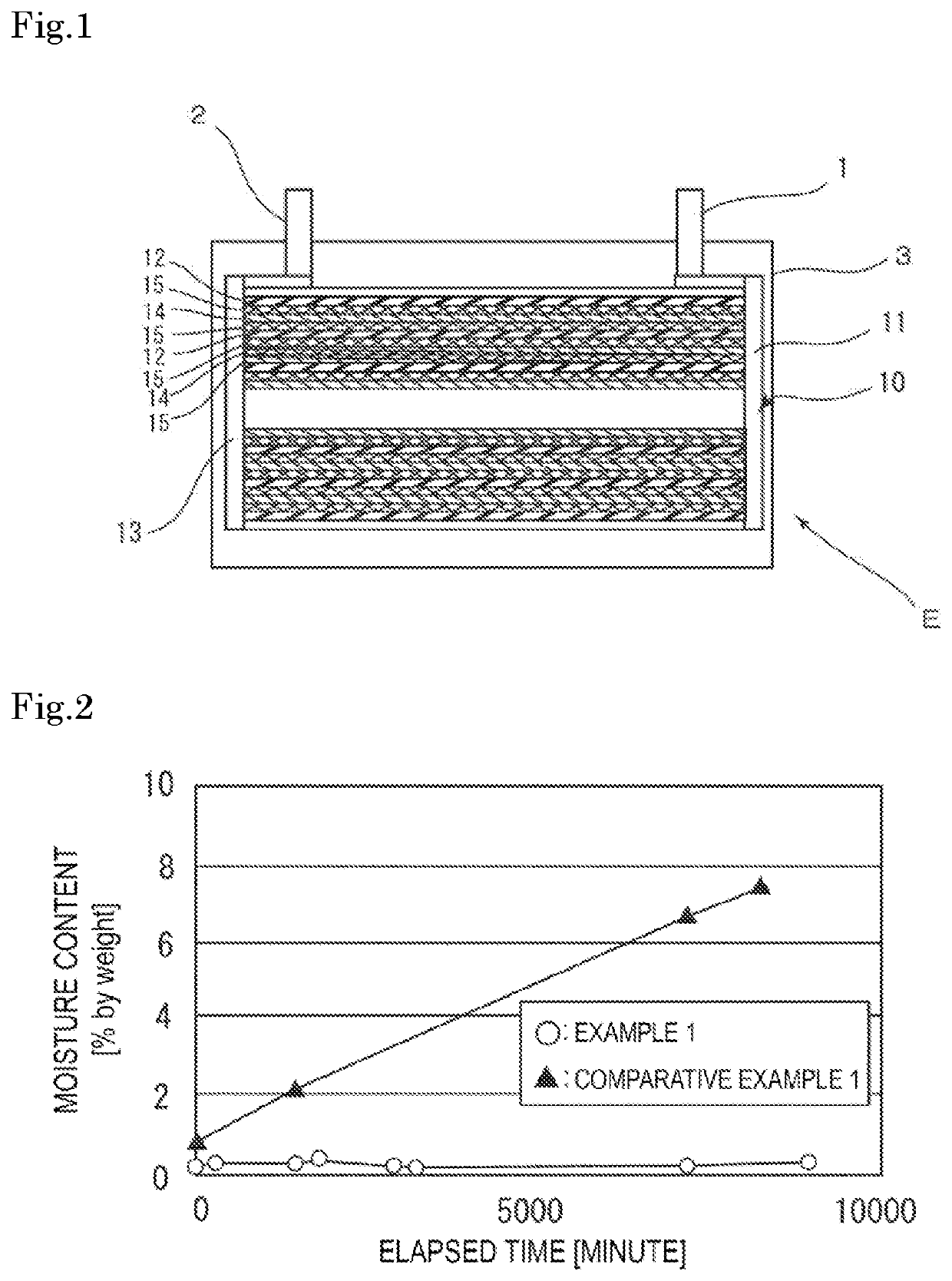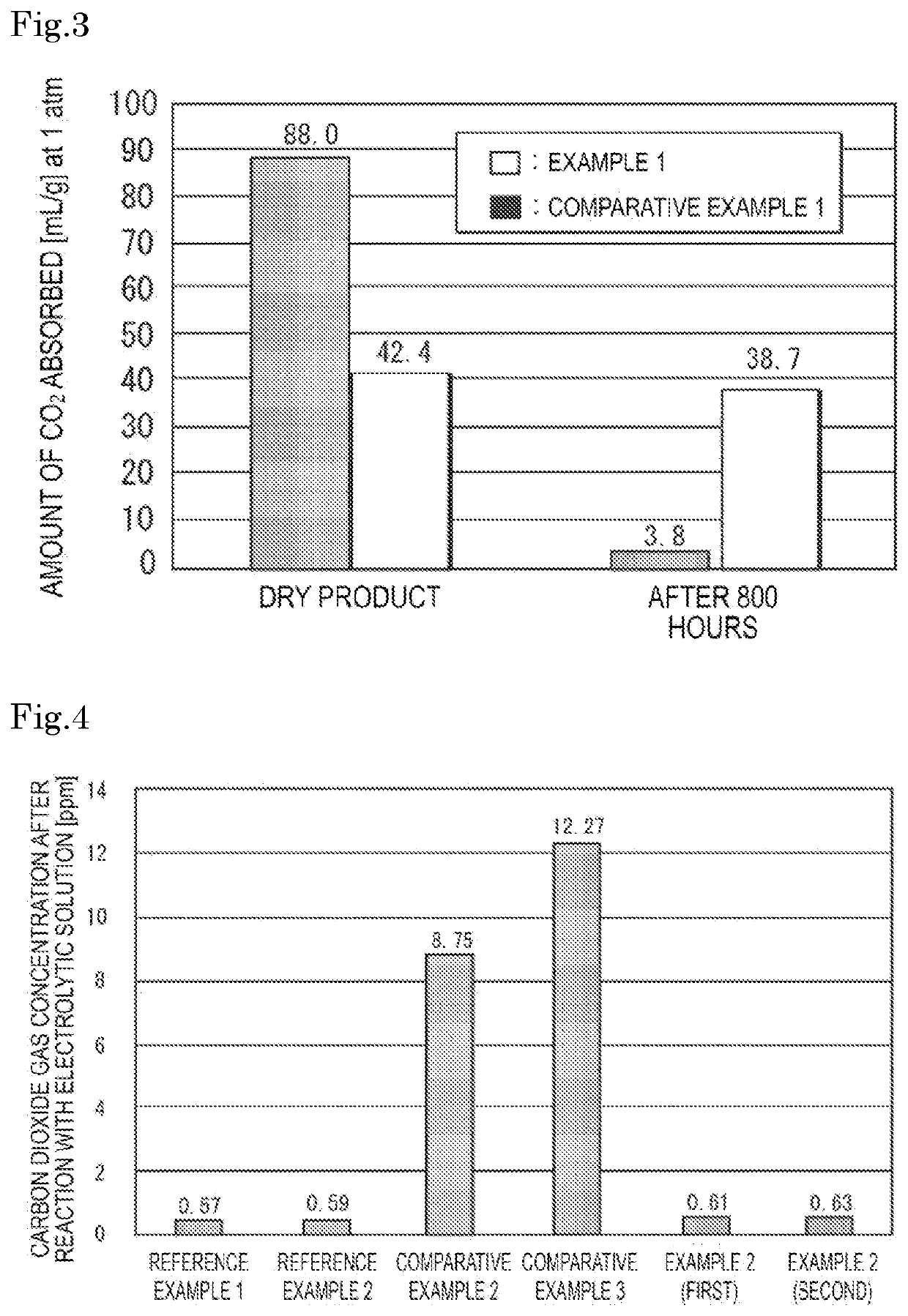Gas absorber for lithium ion battery
a lithium ion battery and gas absorber technology, applied in the field of lithium ion battery gas absorber, can solve the problems of battery life reduction, battery degradation and electrolysis, expansion of battery package, etc., and achieve the effect of suppressing the reduction of battery life and increasing safety
- Summary
- Abstract
- Description
- Claims
- Application Information
AI Technical Summary
Benefits of technology
Problems solved by technology
Method used
Image
Examples
example 2
[0055][Confirmation Test of Reactivity with Electrolytic Solution]
[0056]1 g of the gas absorber for a lithium ion battery used in Example 1 was charged into a commercially available electrolytic solution (1 mol / L of LiPF6 dissolved in the electrolytic solution which was a mixture at a volume ratio of 2:4:4 of ethylene carbonate (EC):dimethyl carbonate (DMC):ethyl methyl carbonate (EMC)) of 16 mL in a nitrogen-purged 100 mL sealed container, and the amount of increase in the concentration of carbon dioxide gas generated was measured. The results are shown in FIG. 4. For comparison, the amount of increase in the concentration of carbon dioxide gas in a state where no gas absorber for a lithium ion battery was charged was measured (Reference Example 1 and Reference Example 2). The results are also shown in FIG. 4.
example 4
[0062][Charge-Discharge Cycle Test]
[0063]The following materials were prepared as materials of the lithium ion battery for testing.
Flat cell: electrode area of about 2 cm2 (Φ16 mm), manufactured by Hohsen Corp.
Positive electrode: a positive electrode material to which 2% by weight of the gas absorber for a lithium ion battery used in Example 1 was added
Negative electrode: Natural graphite
Separator: PP separator having a thickness of 20 μm
Electrolyte solution: 1% by weight of VC and 1 mmol / L of LiPF6 dissolved in a mixed solution of ethylene carbonate
(EC):ethyl methyl carbonate (EMC)=3:7
[0064]The positive electrode, the negative electrode, and the separator were dried under reduced pressure at 90° C. for 1 hour or more by a glass tube oven. These materials were assembled in a glove box under an argon gas atmosphere at a dew point of −30° C. or less to prepare a lithium ion battery material for testing.
[0065]This lithium ion battery was connected to a charge-discharge test unit (charg...
example 5
[0069][High Temperature Storage Test]
[0070]The amount of gas generated (amount of gas volume increased) inside the battery after 85° C. for 7 hour storage of the lithium ion battery for testing manufactured in Example 4. The results are shown in FIG. 7.
PUM
 Login to View More
Login to View More Abstract
Description
Claims
Application Information
 Login to View More
Login to View More - R&D
- Intellectual Property
- Life Sciences
- Materials
- Tech Scout
- Unparalleled Data Quality
- Higher Quality Content
- 60% Fewer Hallucinations
Browse by: Latest US Patents, China's latest patents, Technical Efficacy Thesaurus, Application Domain, Technology Topic, Popular Technical Reports.
© 2025 PatSnap. All rights reserved.Legal|Privacy policy|Modern Slavery Act Transparency Statement|Sitemap|About US| Contact US: help@patsnap.com



